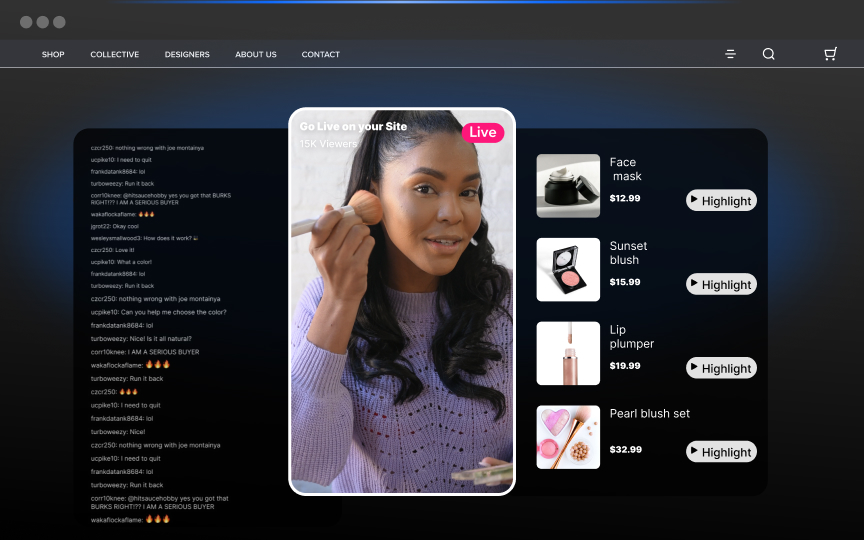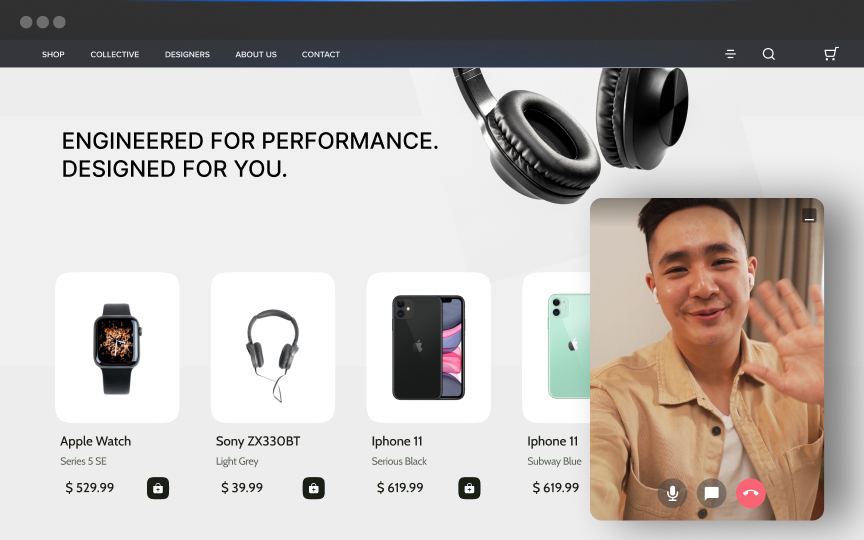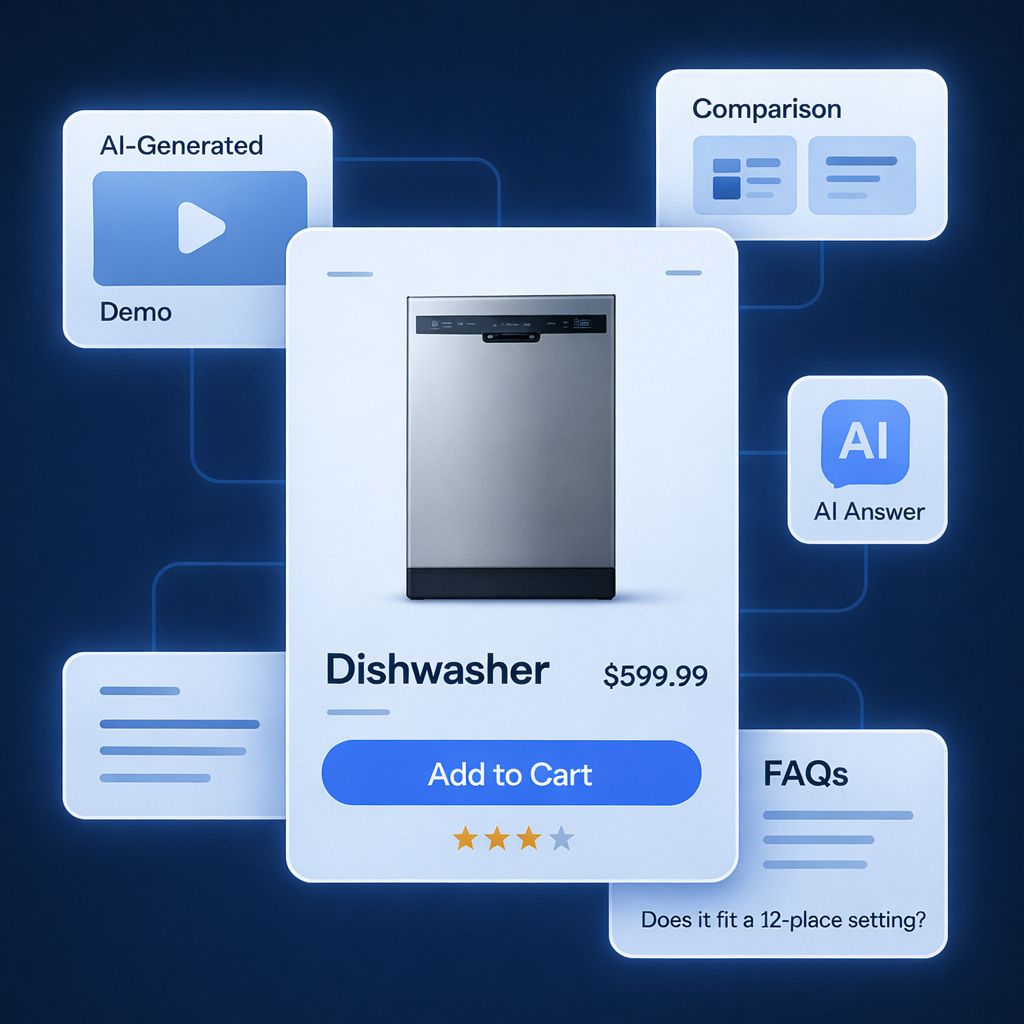In today’s sustainability-driven marketplace, ReCommerce is gaining momentum as a powerful business model.Discover these 11 key insights into ReCommerce to better understand how this model can drive your business towards a sustainable future and create new revenue opportunities while appealing to eco-conscious customers.
What is Recommerce?
Recommerce, also known as reverse commerce or resale commerce, refers to the process of selling previously owned, used, or refurbished products through online platforms or specialized marketplaces. This growing trend in ecommerce allows businesses and individuals to resell goods, promoting sustainability by extending the lifecycle of products and reducing waste.
1: Types of ReCommerce
ReCommerce offers several approaches for businesses to engage in reselling pre-owned goods.
Collaborative ReCommerce Platforms
Collaborative platforms allow businesses to partner with other sellers or consumers to create a shared marketplace. This approach pools resources, offering a wider range of products to consumers while promoting sustainability. It benefits businesses by reducing the cost of sourcing new inventory and increasing product availability.
Subscription-Based ReCommerce Models
Some businesses are introducing subscription models where customers pay a recurring fee to access a rotating selection of pre-owned goods. This approach encourages ongoing engagement, promotes sustainability, and offers value for consumers by continuously providing them with “new” products without the environmental impact of buying new items.
Direct-to-Consumer ReCommerce
Businesses can engage directly with consumers by selling pre-owned or refurbished goods through their own websites. This approach cuts out third-party platforms, reducing commissions and allowing for more control over branding and customer interactions. It also fosters customer loyalty by providing seamless shopping experiences and personalized offers.
Peer-to-Peer ReCommerce
Peer-to-peer ReCommerce involves consumers buying and selling pre-owned goods to one another, often through dedicated platforms like eBay or Depop. Businesses can participate by facilitating these platforms or creating their own, offering services such as payment processing, shipping, or authentication to streamline the process for users.
White-Label ReCommerce Solutions
Businesses looking to enter the ReCommerce market can partner with white-label ReCommerce solution providers. These companies offer ready-made platforms that allow businesses to launch their own ReCommerce operations quickly and efficiently. This approach provides flexibility and scalability without the need to build in-house infrastructure.
Rental ReCommerce Models
Rental models allow customers to rent high-value or luxury pre-owned items for a set period. This approach works well for fashion, electronics, and specialized equipment. Rental ReCommerce promotes sustainability by extending the lifecycle of products, making them available for multiple users over time while generating recurring revenue for businesses.
2: What Items Can Be Sold as ReCommerce?
Understanding suitable items for ReCommerce is crucial for tapping into this growing market.
Popular Categories
Electronics, especially smartphones and laptops, are highly demanded in ReCommerce. Fashion items, including luxury clothing and accessories, remain popular due to their value retention. Home goods, appliances, books, and video game consoles also see high resale potential.
- Electronics: Smartphones, tablets, and laptops lead in resale demand.
- Fashion: Luxury and brand-name clothing attract eco-conscious buyers.
- Home Goods & Media: Books, CDs, and appliances remain relevant categories.
Market Demand
Evaluating consumer demand is key to success in ReCommerce. Trends show strong interest in secondhand apparel, particularly among Gen Z, who prioritize sustainability. By monitoring popular ReCommerce platforms, you can spot trends and adjust sourcing strategies accordingly.
- Secondhand Apparel: Expected to grow to $350 billion by 2028.
- Gen Z Shoppers: Focus on sustainability and value-driven purchases.
- Platform Monitoring: Track popular items to inform sourcing decisions.
Emerging Categories in ReCommerce
While electronics and fashion dominate, new categories like furniture, decor, and children’s products are gaining traction in ReCommerce. These categories attract eco-conscious buyers looking for sustainable, affordable options. Businesses can capitalize on this trend by expanding their offerings to include these emerging product categories and meet growing demand.
Seasonal Resale Opportunities
ReCommerce experiences seasonal spikes, particularly during back-to-school sales or the holiday season. Electronics, educational tools, and fashion are in high demand during these times. By planning inventory around seasonal trends, businesses can maximize sales and cater to consumer needs for affordable, pre-owned goods at the right time.
3: Who Buys ReCommerce Products?
ReCommerce appeals to eco-conscious consumers, especially younger generations who prioritize sustainability and affordability.
Eco-Conscious Shoppers
Consumers focused on minimizing their environmental footprint are highly attracted to ReCommerce. These buyers prioritize sustainability in their purchasing decisions, seeking brands that align with their values. Businesses can appeal to this group by emphasizing the environmental benefits of ReCommerce, such as reducing waste and conserving resources.
Budget-Conscious Consumers
For individuals looking to save money, ReCommerce offers an affordable way to access high-quality goods. These consumers are particularly attracted to pre-owned electronics, fashion, and luxury items, as they can get premium products at a fraction of the original cost. Highlighting value for money can draw in this segment.
Resale Enthusiasts
Some consumers participate in ReCommerce not only to buy pre-owned items but to resell their own goods. These “resale enthusiasts” enjoy the cyclical nature of buying and selling, often trading up or using resale platforms to fund future purchases. Businesses can tap into this trend by offering trade-in programs and incentives.
Sustainability-Driven Families
Families looking to reduce their environmental impact are turning to ReCommerce for products like children’s clothing, toys, and furniture. These shoppers value both the cost savings and the eco-friendly nature of purchasing second hand items for their growing families. Brands can attract this audience by offering family-oriented products and marketing campaigns.
Luxury Bargain Hunters
A growing group of consumers is interested in purchasing high-end, luxury goods at discounted prices. These luxury bargain hunters seek pre-owned designer fashion, accessories, and electronics at a fraction of the retail cost. Offering certified pre-owned programs and authenticity guarantees can help businesses attract this lucrative segment.
4: Environmental Impact of ReCommerce
ReCommerce plays a significant role in promoting sustainability and reducing environmental harm.
Sustainability
ReCommerce extends product life cycles by preventing items from ending up in landfills. This aligns with the circular economy, focusing on reuse and waste reduction. The expected growth in secondhand markets reflects changing consumer attitudes toward sustainability.
Conservation of Resources
By reselling used items, ReCommerce reduces the demand for new manufacturing, lowering the need for raw materials and energy consumption. This also decreases pollution from production and waste disposal, promoting environmental preservation.
- Reduce Waste: Keep products out of landfills by reselling them.
- Conserve Materials: Lower demand for raw resources through reuse.
- Save Energy: Reduce the energy used in manufacturing new products.
Carbon Footprint Reduction
ReCommerce contributes to reducing carbon emissions by cutting down on the production of new goods. Businesses can quantify this impact and communicate it to consumers as part of their sustainability efforts. Highlighting how ReCommerce reduces carbon footprints helps brands attract eco-conscious consumers and builds a positive brand image.
Circular Economy Models
ReCommerce aligns with the circular economy, a sustainability model that focuses on reusing, refurbishing, and recycling products. This approach keeps products in circulation longer and reduces waste. Companies can promote their participation in the circular economy, appealing to consumers who prioritize eco-friendly practices and long-term environmental impact.
5: Financial Benefits of ReCommerce
ReCommerce offers financial advantages for both consumers and businesses, creating new revenue streams.
Financial Impact for Businesses
ReCommerce can reduce costs for businesses by providing a way to resell unsold or returned inventory. Instead of discarding these products, companies can recover part of their investment through resale. This strategy not only reduces waste but also minimizes inventory costs, contributing to the overall profitability of the business.
Trust with Product Guarantees
Offering guarantees on refurbished items can increase consumer confidence in ReCommerce. By implementing quality assurance processes and providing warranties, businesses reassure customers that pre-owned products meet high standards. Product guarantees also strengthen customer loyalty and encourage repeat purchases from eco-conscious and budget-minded shoppers.
Cost Savings for Consumers
Consumers gain access to high-quality products at a fraction of the cost through ReCommerce platforms. Whether it's luxury goods, electronics, or home items, buying pre-owned offers significant savings while ensuring quality.
New Revenue Streams for Businesses
Businesses can enter the ReCommerce market to monetize unsold inventory, reduce waste, and build brand loyalty. By offering refurbished or returned items at a discount, businesses attract eco-conscious consumers and expand into growing markets.
- Maximize Revenue: Monetize out-of-season or returned items.
- Appeal to Budget Shoppers: Attract price-conscious customers.
- Increase Loyalty: Build trust by offering sustainable shopping options.
6: How Can an Online Store Get Involved in ReCommerce?
Strategic integration of ReCommerce into your online store opens up new business opportunities.
Resell Out-of-Season or Returned Items
By reselling out-of-season or returned products at discounted prices, you reduce waste and cater to budget-conscious consumers. This model, as seen in Apple’s Certified Refurbished program, ensures quality control and customer satisfaction.
Avoid Third-Party Commissions
Selling directly through your website’s ReCommerce section allows you to retain more revenue. Avoiding third-party marketplace fees gives you control over branding, customer interactions, and pricing strategies, maximizing profitability.
- Direct Sales: Keep more revenue by selling through your website.
- Avoid Fees: Reduce dependency on third-party platforms.
- Control Branding: Strengthen brand loyalty through direct interactions.
Certified Pre-Owned Programs
Certified pre-owned (CPO) programs help businesses build trust in their ReCommerce offerings. By certifying that pre-owned products meet strict quality criteria, companies ensure customers receive reliable items. CPO programs are particularly effective for electronics and luxury goods, where authenticity and functionality are critical to customer satisfaction.
7: Challenges in Pricing and Authentication
Pricing pre-owned goods and ensuring authenticity are critical challenges in the ReCommerce market.
The Right Price
Pricing involves balancing competitive offers with profitability. Key factors include the product’s condition, market demand, and similar listings. Utilizing data analytics and tracking trends can help set fair and attractive prices.
Technology for Price Optimization
Pricing in ReCommerce can be complex, but technology offers solutions. AI and machine learning tools help businesses analyze market data, adjust prices, and optimize profitability. By tracking demand and consumer behavior, companies can set competitive prices that attract customers while ensuring healthy margins on resold products.
Authenticity
Authenticity is especially important for luxury goods. Implement strict authentication processes, including technology tools and expert reviews, to build trust with consumers and maintain credibility.
- Competitive Pricing: Adjust based on market trends and demand.
- Authentication Tools: Use technology to verify the authenticity of items.
- Trust Building: Ensure customer confidence with certified products.
8: ReCommerce as a Business Strategy
ReCommerce offers a strategic opportunity to attract new customers, boosting conversions, and expand your market reach through innovative approaches such as live commerce strategies and leveraging platforms with live shopping influencers.
Live Commerce Strategies
Live commerce, where products are sold during live-streamed events, is a growing trend in ReCommerce. Businesses can use this strategy to engage directly with consumers, showcase pre-owned products in real time, and drive impulse purchases. Collaborating with influencers during live streams can boost visibility and attract new customers.
Loyalty Through Sustainable Practices
Incorporating sustainability into a business’s core strategy can enhance customer loyalty. By aligning with eco-conscious values, businesses can build lasting relationships with customers who prioritize environmental impact. Regularly promoting sustainability initiatives, such as recycling or trade-in programs, reinforces brand trust and encourages repeat purchases.
Limited Edition ReCommerce Drops
Offering limited-time or exclusive ReCommerce product drops can generate excitement and urgency among consumers. This strategy leverages scarcity to boost demand for pre-owned or refurbished goods. Businesses can partner with influencers or brands to create hype around these special collections, attracting new and returning customers.
ReCommerce into Omnichannel Strategies
ReCommerce can be integrated into an omnichannel approach, allowing customers to purchase pre-owned goods both online and in physical stores. Offering seamless transitions between in-store and online experiences enhances convenience, customer engagement, and retention. By providing multiple touchpoints for purchase, businesses can broaden their market reach.
Data-Driven Insights for Growth
Data analytics play a crucial role in optimizing ReCommerce strategies. By tracking customer behavior, pricing trends, and popular product categories, businesses can refine their inventory and marketing approaches. Leveraging these insights ensures businesses remain competitive and responsive to market changes, maximizing conversions and revenue.
9: The Role of Technology in ReCommerce
Technology, including the transformative role of AI, is key in making ReCommerce more accessible and efficient for businesses and consumers.
E-Commerce Platforms
Online platforms like eBay and Facebook Marketplace enable widespread access to ReCommerce. Brands can offer trade-in or buy-back programs directly on their websites, ensuring customer loyalty and increasing resale opportunities.
Data Analytics
Data analytics helps optimize inventory management and pricing strategies by tracking consumer behavior. The transformative role of AI in providing personalized recommendations and insights into trending products improves the customer experience and streamlines business operations with the help of website engagement tools.
- Personalized Offers: Tailor recommendations based on user behavior.
- Inventory Management: Optimize stock levels using data insights.
- Platform Integration: Use e-commerce platforms and website engagement tools to reach broader audiences.
10: Building Community Around ReCommerce
Engaging with consumers and fostering a community around ReCommerce strengthens customer loyalty.
Engage with Consumers
Promoting ReCommerce initiatives helps position your brand as environmentally responsible and can enhance brand experience.Use social media, interactive video tools, incentives, educational content, and community-building strategies to increase consumer participation in sustainable shopping practices, create personalized engagement experiences.
Educational Campaigns
Creating awareness through educational campaigns, as part of your customer engagement strategies, about the benefits of ReCommerce inspires customers to participate. Sharing data on environmental impact and offering practical guides helps consumers understand the value of buying pre-owned.
- Sustainability Initiatives: Showcase your ReCommerce efforts to engage shoppers.
- Incentivize Participation: Encourage customers to trade-in or buy used items.
- Educational Content: Inform consumers about environmental impacts.
11: Future Trends in ReCommerce
As ReCommerce evolves, staying ahead of trends will position your business for success.
Market Changes
The ReCommerce market is experiencing rapid growth due to increasing environmental awareness and shifting consumer preferences. Businesses should adapt to these changes by expanding their offerings and enhancing their sustainability image.
Product Offerings Expansion
Exploring new product categories within ReCommerce attracts a broader audience. By launching or expanding ReCommerce programs, brands maintain quality standards, address sustainability concerns, and reach new market segments.
- Product Expansion: Offer more categories to attract diverse customers.
- Sustainability Image: Enhance your brand by aligning with eco-friendly values.
- Growth Opportunities: Tap into emerging trends for future success.
Conclusion
By integrating ReCommerce strategies, businesses can tap into growing markets, meet consumer demand for sustainability, and position themselves as leaders in the shift toward a sustainable retail future.
Unlock Exclusive Insights
By submitting this form, you agree to Firework's privacy policy and consent to receive personalized marketing communications. You can unsubscribe at any time.




























